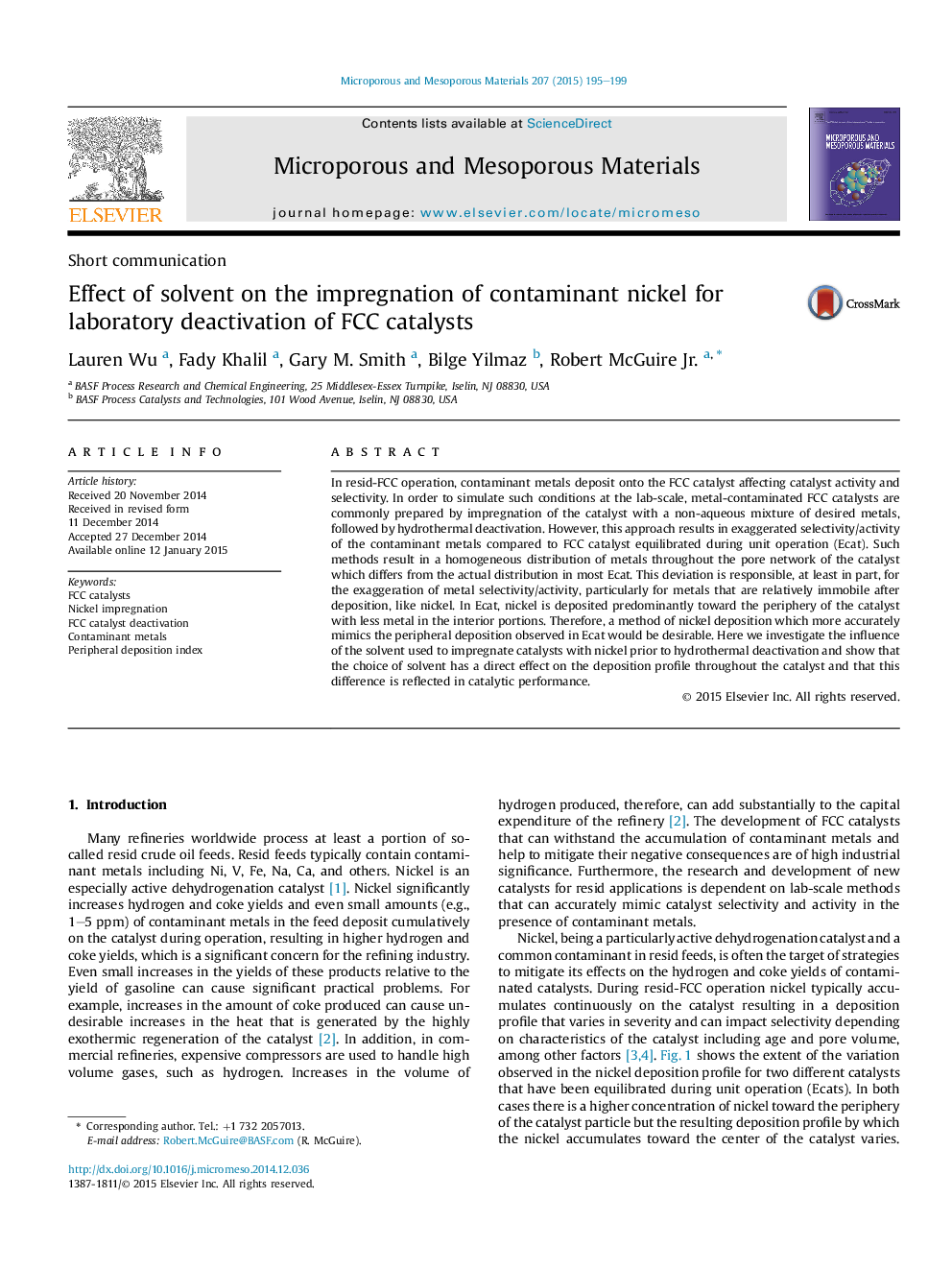| Article ID | Journal | Published Year | Pages | File Type |
|---|---|---|---|---|
| 72675 | Microporous and Mesoporous Materials | 2015 | 5 Pages |
•The Peripheral Deposition Index (PDI) of nickel on FCC catalysts is described.•The PDI is affected by solvent choice during impregnation of FCC catalysts.•Solvent induced aggregation is a simple method to control nickel deposition.•The method provides a means to control the deposition of metals on FCC catalysts.•Accurately mimics natural nickel deposition that occurs during FCC operation.
In resid-FCC operation, contaminant metals deposit onto the FCC catalyst affecting catalyst activity and selectivity. In order to simulate such conditions at the lab-scale, metal-contaminated FCC catalysts are commonly prepared by impregnation of the catalyst with a non-aqueous mixture of desired metals, followed by hydrothermal deactivation. However, this approach results in exaggerated selectivity/activity of the contaminant metals compared to FCC catalyst equilibrated during unit operation (Ecat). Such methods result in a homogeneous distribution of metals throughout the pore network of the catalyst which differs from the actual distribution in most Ecat. This deviation is responsible, at least in part, for the exaggeration of metal selectivity/activity, particularly for metals that are relatively immobile after deposition, like nickel. In Ecat, nickel is deposited predominantly toward the periphery of the catalyst with less metal in the interior portions. Therefore, a method of nickel deposition which more accurately mimics the peripheral deposition observed in Ecat would be desirable. Here we investigate the influence of the solvent used to impregnate catalysts with nickel prior to hydrothermal deactivation and show that the choice of solvent has a direct effect on the deposition profile throughout the catalyst and that this difference is reflected in catalytic performance.
Graphical abstractFigure optionsDownload full-size imageDownload as PowerPoint slide
